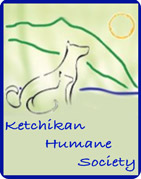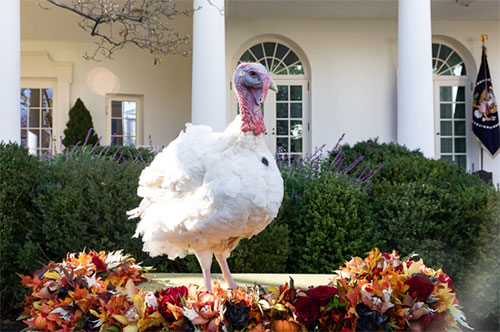









Weekly Specials
Online Shopping; Pickup or Delivery |
|











 Contact Contact 
 Webmail
Letters Webmail
Letters
 News Tips News Tips
 Copyright Info Copyright Info
 Archives Archives
Quick News
Search
 Alaska Alaska
 Ketchikan Ketchikan
 SE Alaska SE Alaska
Columns
- Articles
 Dave Kiffer Dave Kiffer
 Money Matters Money Matters
Historical
Ketchikan
 June Allen June Allen
 Dave
Kiffer Dave
Kiffer
 Louise
B. Harrington Louise
B. Harrington
Sports
 Ketchikan Links Ketchikan Links
Public Records
 FAA Accident Reports FAA Accident Reports
 NTSB
Accident Reports NTSB
Accident Reports
 Court Calendar Court Calendar
 Recent Filings & Case Dispositions Recent Filings & Case Dispositions
 Court Records Search Court Records Search
 Sex Offender Reg. Sex Offender Reg.
 Public Notices Public Notices
 Alaska Recall Alerts Alaska Recall Alerts
 Recalls.gov Recalls.gov
 AST Daily Dispatch AST Daily Dispatch
 KTN
Police Reports KTN
Police Reports
 Juneau Police Reports Juneau Police Reports
Weather,
Webcams
 Today's
Forecast Today's
Forecast
 KTN
Weather Data KTN
Weather Data
 AK
Weather Map AK
Weather Map
 AK Weathercams AK Weathercams
 AK Earthquakes AK Earthquakes

|
|

Tuesday
November 20, 2018

|
Peas is the 2018 National Thanksgiving Turkey
In a classic Thanksgiving tradition, the White House turkey pardoning was held in the Rose Garden today with President Trump participating. From the moment polls opened yesterday, Americans began casting their votes online for two very qualified candidates, Peas and Carrots. With the votes tallied, by a razor-thin margin, Peas has earned the honor of 2018 National Thanksgiving Turkey! Along with his runner-up and alternate, Carrots, Peas will move to the “Gobbler’s Rest” exhibit in Blacksburg, Virginia. At Gobbler’s Rest, students and veterinarians within Virginia Tech’s Department of Animal and Poultry Sciences will care for both turkeys, who will soon be available for public visitation.
Official White House Photo By ANDREA HANKS
|
|
Alaska: Officials recommend discarding all romaine lettuce due to new multistate outbreak of E. coli; no Alaska cases reported - According to Alaska officials, the Centers for Disease Control (CDC) and the U.S. Food and Drug Administration (FDA) are investigating a multistate outbreak of E. coli O157:H7 illnesses likely linked to the consumption of romaine lettuce.
The Centers for Disease Control is reporting that 32 cases of E. coli O157:H7 infection have been identified in residents of 11 states since early October; 13 people have been hospitalized, and no deaths have been reported. According to the Alaska Deptartment of Health & Social Services and the Alaska Department of Environmental Conservation, no cases have been detected in Alaska as of this date.
Because details about specific romaine lettuce distributors or producers are not yet known, the The Centers for Disease Control and the Food and Drug Administration recommend that people should not consume any romaine lettuce until further information can be obtained. This includes whole head romaine, precut lettuce, hearts of romaine in bags and mixed salads that contain romaine. Retailers and restaurants should not offer for sale or serve any romaine until more is known about this outbreak. - More...
Tuesday PM - November 20, 2018
Alaska: Hunters Rally to Assist State's M.ovi Surveillance Efforts - Thanks to hunters this fall, expanded efforts by the Alaska Department of Fish and Game to learn more about Mycoplasma ovipneumoniae, or "M.ovi," received a welcome boost. Providing specimens from the field, hunters from around the state helped the department collect laboratory samples from more than 330 Dall sheep, 110 mountain goats, 100 caribou, and 100 moose.
"Hunter cooperation is crucial to our efforts to learn more about M.ovi distribution and prevalence in multiple species statewide," said Director Bruce Dale. "We're really still at a starting point, and the more we discover about M.ovi in Alaska the more we realize how much we have yet to learn."
A bacteria known to occur in domestic sheep, goats, and wild sheep and goats in the Lower 48, some M.ovi strains have been identified as pathogens in Lower 48 bighorn sheep pneumonia outbreaks that have led to die-offs. The bacterium was detected earlier this year for the first time ever in Alaska Dall sheep and mountain goats. It was subsequently discovered in a Fortymile caribou found dead of pneumonia. That animal's death marked the first — and, so far, only — case where M.ovi has been implicated in wildlife respiratory disease in Alaska. - More...
Tuesday PM - November 20, 2018
Alaska: Short-lived salmon play a role in long-term survival By MARY CATHARINE MARTIN - If you’ve fished around Frazer Lake on Kodiak Island over the last 20 years, odds are you’re familiar with jack salmon — a salmon, usually sockeye or a king, that returns to its natal stream after an abnormally short time at sea. For sockeye, that’s one year; for kings, one to two. Because jacks spend less time at sea and have less time to grow, they’re much smaller than normal.
At Frazer Lake, the sockeye making their way up the river have, a few times since the year 2000, been almost 50 percent jacks.
That creates problems for Kodiak fisheries staff tasked with managing for commercial value. But before they can figure out what to do about jacks, said Kevin Schaberg, Western Region Salmon Research Supervisor for the Alaska Department of Fish & Game, it’s important they figure out what jack salmon mean and why the run at Frazer Lake has such high numbers of them. |
|
“Jacks are important to your population. Just saying ‘kill them all’ isn’t probably going to solve (the problem.) But on the other hand, too many jacks isn’t a good thing either, so we’re trying to figure out where that happy medium is,” Schaberg said.
Schaberg and colleagues reached out to the University of Washington’s Alaska Salmon Program, which has been researching sockeye salmon in the Bristol Bay’s Wood River watershed for more than 60 years, asking for help looking into exactly what’s going on at Frazer Lake and how to address it.
What makes a jack?
Ironically, salmon are more likely to become jacks when their growing conditions are good, meaning that as juveniles in their natal streams or lakes, they grew faster.
“If they reach a certain body size or body condition by a certain age, (their bodies) will make a decision to become jacks. Any juvenile male salmon could become a jack,” said Lukas DeFilippo, a PhD student at the University of Washington’s School of Aquatic and Fishery Sciences. DeFilippo is writing his dissertation on jack salmon and is helping look into the Frazer Lake situation.
Jack-fertilized eggs are also more likely to become jacks, themselves, he said.
“Jills,” or female salmon that return after only a year at sea, are rare in part because for females, smaller body size means fewer eggs. Jacks, on the other hand, can potentially produce the same amount of offspring as a typical adult sockeye.
Becoming a jack is a tradeoff, DeFilippo said: more jacks survive the ocean because they’re there for less time, and once they return to their natal streams, they’re less vulnerable to bears. But they also have less success passing their genes on to the next generation, as both males and females chase them off redds. As a result, instead of courting female salmon, they hide behind obstacles and sneak in to fertilize just-laid eggs.
DeFilippo has found that means streams with more predation from bears — small and shallow streams — have higher levels of jacks. So do streams with lots of cover for sneaking. - More...
Tuesday PM - November 20, 2018
|
Analysis: In Alaska, everyone's grappling with climate change By NANCY FRESCO - Coastal villages are washing into the Bering Sea, trees are sprouting in the tundra and shipping lanes are opening in an ocean that was once locked in ice. In Alaska, climate change isn’t a distant or abstract concern.
As a climate change researcher at the International Arctic Research Center at the University of Alaska, Fairbanks, I see a lot of compelling data – and also hear a lot of compelling stories. Both data and stories are important.
For everyone from the National Park Service to the military, from the oil industry to city managers to traditional hunters, adapting to climate change is the new reality in Alaska.
It’s happening – and fast
Almost 12 years ago, we embarked upon a new research effort at our state university. The idea was simple: Meet the needs of those planning for our state’s future by providing information on climate change that was local, relevant and scientifically valid.
First named the Scenarios Network for Alaska Planning (SNAP), we soon had to add the word “Arctic” to our name, because we realized that Canada and other countries from the polar region were as eager for long-term forecasts of climate change trends as Alaska was.
In the Arctic and sub-Arctic, climate change is accelerated and its effects are profound. This is primarily the result of what is known as the “albedo effect”: As we lose reflective ice and snow due to warming, more heat-absorbing dark ground and water are exposed. Thus, local warming gets even more extreme.
Just where climate change effects are extreme, data is often limited. Few weather stations offer long-term reliable histories. Populations are sparse. So we glean information from a variety of sources and combine that with historical data and the accumulated knowledge of people who live on the landscape. All point incontrovertibly to a warming environment.
Widespread effects
The ways in which this change plays out are as diverse as the people and landscapes of Alaska.
Our state includes not only Arctic tundra underlain by the permanently frozen ground called “permafrost,” but also vast stretches of spruce, birch, aspen, alder and willow trees: the boreal forest. To the west, the windy Aleutian islands stretch out into the Pacific, and to the southeast, Alaska hugs the coast of British Colombia and boasts dense and towering coastal rainforest.
Across the state, hundreds of small communities – primarily Alaska Native villages – are not connected to the road system. Accessible only by air, sea, river or winter trails, these communities maintain traditional subsistence lifestyles based on hunting, fishing and gathering food and other resources.
Meanwhile, the state’s coffers are enriched by money from oil and gas extraction – which are both primary sources of climate change, an irony that has not gone unnoticed by those struggling to craft long-term plans for Alaska.
With 6,640 miles of coastline, Alaska is an ocean-dependent state. Due to loss of sea ice that protects soft soils from seasonal storms, huge stretches of this coastline are washing into the Bering Sea. For communities at risk of erosion, all other concerns pale in comparison. At stake are not only structures and money, but also traditions, a sense of place, and even lives. - More....
Tuesday PM - November 20, 2018
|
 |
JASE GRAVES: In Defense of Thanksgiving - Today, too many Americans consider Thanksgiving as a mere speed bump on the way to Christmas, a chance to fuel up for Black Friday, when they'll need their energy to cage-fight each other for an Instant Pot shaped like R2-D2 or a television the size of Guam.
In an effort to adjust our perspective, let's pause for a moment to reflect on the history of this special holiday, intended as a celebration of America's many blessings (including expandable waistbands).
In 1621, the Pilgrim fathers, mothers, sisters, brothers and creepy uncles gathered with native americans for The First Thanksgiving. Unfortunately, this harmonious occasion ended in a heated argument over immigration policy and whether the cranberry sauce with or without berries is the real stuff. A couple of centuries later, President Abraham Lincoln proclaimed Thanksgiving as an official holiday in a valiant attempt to control the national overpopulation of giblets. Moving ahead to the twentieth-century, a staple of the modern Thanksgiving dinner emerged with the invention of green bean casserole, ensuring that American children would be even less likely to eat their vegetables. - More...
Tuesday PM - November 20, 2018
 |
TOM PURCELL: Give More Thanks, It's Good for You - "Thanksgiving is the time of year when we reflect on our incredible blessings, but many Americans aren't feeling very thankful?"
"That's what an interesting Harris poll survey conducted a few years ago for American Greetings found. Psychotherapist Amy Morin reported in Forbes that three in five Americans would 'rather do something else rather than reflect on what they're thankful for on Thanksgiving.'"
"But we have so much to be thankful for. Our economy is booming. Our standard of living, the world's best, is improving. Could we so take our blessings for granted that we forget how good we have it?"
"It appears that far too many Americans are doing just that. Cafehayek.com argues that a typical middle-class American today lives better than billionaire John D. Rockefeller did 100 years ago. As rich as Rockefeller was, he didn't have air conditioning; sophisticated medicine (my grandfather died in 1937 at age 34 from strep throat because penicillin hadn't been discovered yet); safe, fast travel; limitless dining and entertainment options; and many other wonderful things that we have." - More...
Tuesday PM - November 20, 2018
 |
WILL DURST: Giving Thanks in 2018 - One thing we should all be grateful for this year is that Thanksgiving is making its annual appearance at the earliest possible point on the 22nd. And it could not come at a better time, conveniently laying down a soft muffling blanket of brightly colored leaves over the scorched ruts of one of the most contentious elections in our nation's history. Thanksgiving this year comes 712 days before the next most contentious election in our nation's history, one that officially kicked off on Wednesday, November 7.
The fourth thursday of November is the best of American holidays, a non-denominational feast of friends, family, food and football featuring six-story helium balloons on rope tethers jousting with lampposts. Where's the bad? The first sanctioned appearance of Santa, for crum's sakes.
And we do have much to be thankful for. 712 days until the next election for one thing. Also, we can't forget to mention all the everyday ordinary objects, people and events that fill our lives and normally slide by unnoticed as we go about the important business of earning a living and carving out a future. Like the store-bought pumpkin pie topped by canned whipped cream that is undoubtedly the real culprit for the hour nap striking down the entire family after dinner. - More..
Tuesday PM - November 20, 2018
|

Political Cartoon: Thanksgiving and politics
By Bruce Plante ©2018, Tulsa World
Distributed to paid subscribers for publication by Cagle Cartoons, Inc.
Open Letter to PeaceHealth CEO, Liz Dunne - Recently I was walking by a PeaceHealth satellite office here in Ketchikan that is located in the Plaza shopping center. I noticed flyers taped to the window of this office and I had to do a double take. Even though the event advertised has come and gone, the contradiction of a hospital advertising “Beer and Brats” needs to be addressed.
How on earth can an organization whose mission is "promoting personal and community health (and) relieving pain and suffering" promote an event that encourages people to "come and bend an elbow?"
It is hard to believe that there was a recent community event in this same Plaza that profiled brave young people testifying how they have fought to overcome their alcohol and drug addictions.
This community, like many others in Alaska, continues to have extensive issues with alcoholism, drug abuse, and subsequent homelessness. I see the effects of alcoholism just about every day in this small town. I have even had friends locally die of the disease despite my efforts to help them. For a hospital to promote such an event as this gives the perception that those in the medical community not only encourage the illness, but they also stand ready to provide and charge for the care. - More...
Tuesday PM - November 20, 2018
Lifting the ‘Roadless Rule’: Unique opportunity for Southeast Alaskans By
Heidi Hansen, Deputy Commissioner DNR - From the North Slope to the Panhandle, and the Interior to the Peninsula, rural Alaskans are prioritizing their access – to each other, the rest of Alaska and the world.
Cost is often the limiting factor. But not always.
Many community leaders want to improve access without jeopardizing the unique character and resources of their communities. It’s literally a fight for survival for some small communities. For others, it’s part of a long-term plan to become more sustainable. - More...
Saturday PM - November 17, 2018
 |
Proposed Distillery at The Old Firehouse By
Shauna Lee - Finally, after a long period of stagnation, I’ve seen the spark of change here in Ketchikan and it’s made me feel quite optimistic about our future. Businesses like Nibliks, SoHo Coho, Chinook and Company and Ketchikan Dry Goods have brought new life into the downtown core with their updated design aesthetic and merchandise that encourages our local dollars to stay local. Venues like the New York Café, the Bawden Street Brewery and the Fish House have brought us new menu offerings and the opportunity to eat, drink and be merry right here in our hometown. It’s an exciting time for the First City and I feel like we are on the precipice of a new era where we leave old outdated ideas behind and embrace what our future could be. So how do we keep this momentum going?
As a business person I have learned over the years that I am more successful when I reach out to other local businesses and organizations. Working with my fellow colleagues rather than against them, has been a recipe for success. I want to help other companies become successful because when their boat rises, I get to ride the same high tide. That is why I want to encourage the City of Ketchikan to support the proposed distillery at the old Ketchikan Fire Department location. - More...
Friday PM - November 09, 2018
 Webmail your letter or Webmail your letter or
 Email Your Letter To: editor@sitnews.us Email Your Letter To: editor@sitnews.us
|
Articles &
photographs that appear in SitNews may be protected by copyright
and may not be reprinted or redistributed without written permission
from and payment of required fees to the proper sources.
E-mail your news &
photos to editor@sitnews.us
Photographers choosing to submit photographs for publication to SitNews are in doing so, granting their permission for publication and for archiving. SitNews does not sell photographs. All requests for purchasing a photograph will be emailed to the photographer.
|
|
















The Local Paper is
available online.
Click here for this week's printed edition (PDF)

|
|

![]() Contact
Contact ![]()
![]() Webmail
Letters
Webmail
Letters![]()
![]() News Tips
News Tips![]()
![]() Copyright Info
Copyright Info![]() Archives
Archives![]() Alaska
Alaska![]() Ketchikan
Ketchikan![]() SE Alaska
SE Alaska![]() Dave Kiffer
Dave Kiffer![]() Money Matters
Money Matters ![]() June Allen
June Allen![]() Dave
Kiffer
Dave
Kiffer![]() Louise
B. Harrington
Louise
B. Harrington ![]() Ketchikan Links
Ketchikan Links![]() FAA Accident Reports
FAA Accident Reports ![]() NTSB
Accident Reports
NTSB
Accident Reports![]() Court Calendar
Court Calendar![]() Recent Filings & Case Dispositions
Recent Filings & Case Dispositions ![]() Court Records Search
Court Records Search![]() Sex Offender Reg.
Sex Offender Reg.![]() Public Notices
Public Notices![]() Alaska Recall Alerts
Alaska Recall Alerts![]() Recalls.gov
Recalls.gov![]() AST Daily Dispatch
AST Daily Dispatch![]() KTN
Police Reports
KTN
Police Reports![]() Juneau Police Reports
Juneau Police Reports ![]() Today's
Forecast
Today's
Forecast![]() KTN
Weather Data
KTN
Weather Data![]() AK
Weather Map
AK
Weather Map![]() AK Weathercams
AK Weathercams![]() AK Earthquakes
AK Earthquakes










































